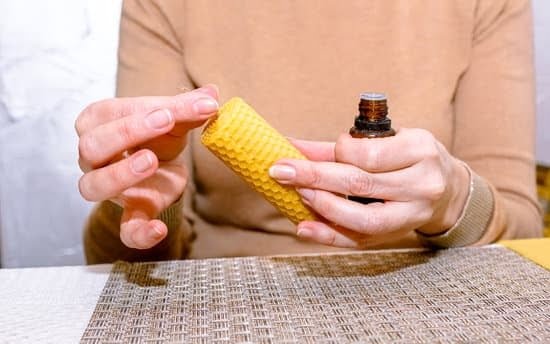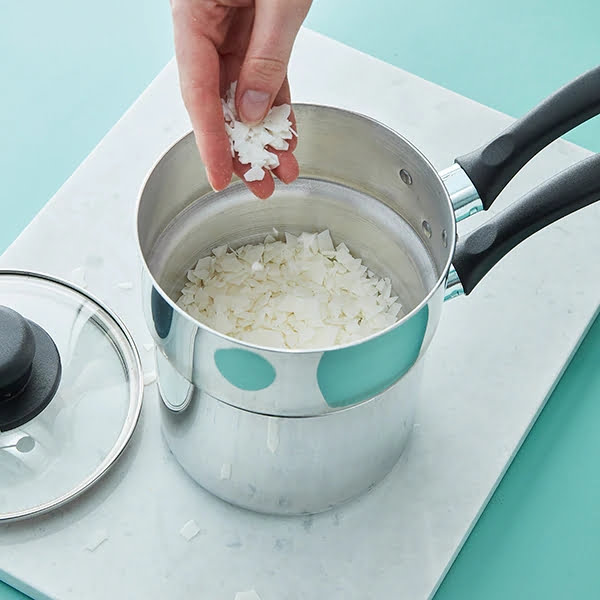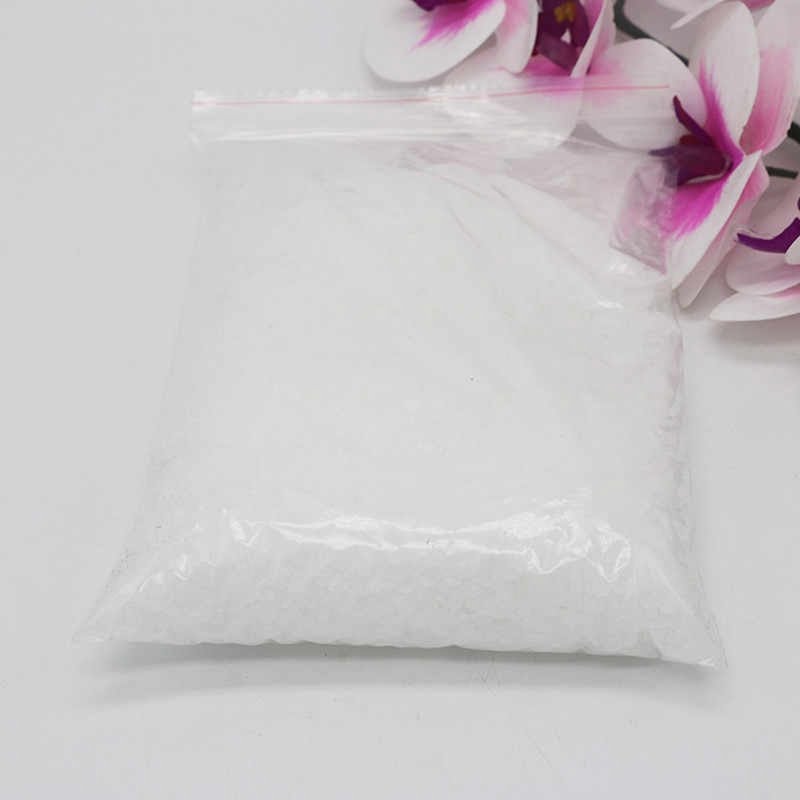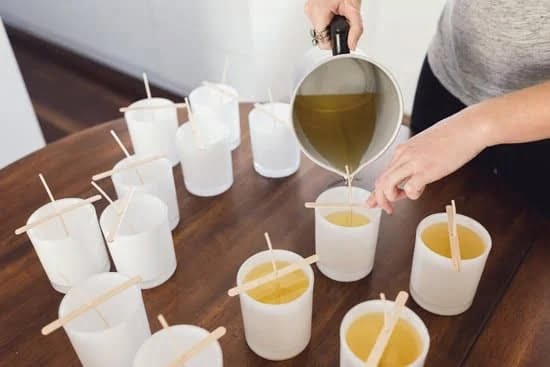Introduction
Making candles can be a fun and rewarding activity that many people enjoy. It can take a lot of skill, trial and error, and practice to become a successful candle maker. One of the more important decisions for making great scented candles is when to add fragrance.
Before attempting to add fragrance to your candles, it’s important to prep the area appropriately in order to prevent any accidents from happening. Take the time to lay out all necessary supplies such as molds, wax, wicks, and of course the scent you plan on using. Using essential oils versus synthetic fragrances is recommended for those who are conscious about using only natural ingredients. Additionally, safety precautions like wearing gloves and eye protection should be worn in case of any splashes or spills.
Once everything is prepped correctly, it’s then time to pour your melted wax into your specific mold. It’s important not to let the wax cool too much before adding your choice of scent because a cool temperature will keep the scent from bonding with the wax correctly. Different types of wax require different temperatures in order for scent molecules to bond properly; however there are general guidelines you can use – adding fragrance oil prior between 160-180 degrees Fahrenheit or earlier if your wax begins solidifying sooner than this range should work fine.
After allowing your melt-pour cycle complete and allowing your candle cool to around 140-150 degrees Fahrenheit you should add any extra color dyes or glitter if desired. The final step would be to spritz some additional fragrance over top if wanted–this will create an even stronger effect by providing another layer of intensity that many fragrant candle lovers appreciate!
With that being said, determining when exactly add make sense when creating scented candles turns out being quite complex overall as depending on unique situations like type of base used or how much fragrance needs added each factor come into play when keeping in mind how strong one desires their candle hues aroma be in the end! Still though as long following basic rules mentioned earlier adding aromatic essences shouldn’t provide big problems!
An Overview of Candle Making Supplies and Ingredients
Making candles involves selecting and preparing the appropriate ingredients, such as wax, fragrance, dye, a variety of candle containers or molds, wicks and other miscellaneous supplies. Depending on the type of wax used during the candle-making process, some set up faster than others.
The most commonly used waxes are paraffin wax or beeswax which is easily melted and molded when poured at the proper temperature. For a fragrant touch to your candles, fragrance should be added once the candle’s wax has reached 140-degrees Fahrenheit throughout. Adding any fragrances too soon can result in them boiling away before the candle has cooled enough to achieve a good scent throw. Many scents are also infused into the melted wax with a colorant and combined prior to pouring into a container or mold. After adding dye and fragrance to your melted wax mixture, always stir gently to avoid creating bubbles in your finished product.
When all of these steps have been completed, you can then proceed with pouring your liquid wax into pre-prepared containers or molds; make sure that each mold is rapidly cooled after pouring your liquid wax as this will help prevent air bubbles from appearing in later steps. Finally, allow the candles plenty of time to cool completely before lighting them for use; doing this will ensure that they do not leave an oily residue behind while burning.
What Is Fragrance Oils and How Does It Work?
Fragrance oils are synthetic versions of natural aromas created with a combination of plants and flowers. They produce a strong, intense scent that can fill a room in minutes. Fragrance oils usually come in the form of liquid concentrates derived from plant extracts such as essential oils and absolutes. When added to candles, the fragrance oil’s aroma is released when heated from the flame, allowing for an even distribution of the scent throughout the area where it is burning. Many candle makers actually prefer using fragrance oils over essential oils because they allow more accuracy when dosing out scents and often provide longer lasting fragrances due to higher concentrations. Furthermore, synthetic scent-making allows for customization of what might not be found through natural aromatic sources. Depending on your preference, you can combine multiple fragrance oils together to create unique scents that stand out compared to those found in stores or online retailers.
When adding fragrance oil to candles, it is important to use the right amount to ensure optimal performance without wasting supplies or creating excessive smoke while burning. Generally speaking, one ounce of fragrance oil should be enough to scent one pound of wax (a standard candle weight). However, this ratio will vary depending on the type of wax used and desired intensity of aroma when burning. Experienced candle makers adjust ratios accordingly after trying different amounts in a trial-and-error fashion until satisfied with their results.
Where Fragrance Oils Come From
Making candles with your own hands is a rewarding way to express creativity and enjoy the relaxing aroma of scented candles. When it comes to adding fragrance to your DIY candles, timing is key. Fragrance oils should be added after the wax has cooled down and just prior to pouring into the mold or container. That ensures that the scent has plenty of time to evenly disperse in the wax while avoiding excess evaporation.
Fragrance oils are typically made from natural ingredients such as essential oils, absolutes and concretes derived from flowers, plants, herbs, spices and barks. The molecules extracted from these plants are then combined with synthetic components in order to make complex and interesting scents for candlemaking. Most commercial fragrance oils contain some degree of synthetic oil derived from mineral or petrochemical sources. Synthetically produced components are also used when all-natural alternatives would likely be too costly or difficult to obtain in any large quantity for candle making purposes.
The Benefits of Adding Candle Fragrance
The primary benefit of adding fragrance to candles is that it can create a pleasant and soothing atmosphere in any room. Fragrance not only stimulates the sense of smell but it can also evoke certain emotions, memories, or feelings within a person. For instance, by using scents such as pine or cinnamon one can experience an invigorating feeling while floral fragrances like lilac can provide a calming effect. Adding fragrance oils to candles can also be a great way to freshen up stale air, especially in rooms that lack windows or proper ventilation. The subtle aroma of the scent helps to keep the room inviting and eliminate odors. Furthermore, incorporating essential oils with therapeutic properties into candle fragrances has become increasingly popular as these compounds are believed to directly improve health and well-being when inhaled. Lastly, enhancing candles with pleasant aromas offers various aesthetic benefits such as providing a vibrant pop of color or even created sculpted designs on the surface of the wax which adds detail to the presentation.
Popular Candle Fragrance Oils and Their Benefits
Adding fragrance to a candle is an optional step that many people use to give their candles a pleasant aroma. Fragrance oils come in a variety of scents and can provide therapeutic benefits in addition to giving the candle a nice smell. When adding fragrance to your candles, you should do so towards the end of your candlemaking process, when the wax is melted and ready for pouring.
When adding fragrance, there are several popular essential oils that offer different benefits alongside their distinct fragrances. Lavender oil is very popular, providing comfort and relaxation with its calming floral aroma. Peppermint oil has minty top notes and can help invigorate the senses while helping clear breathing passageways. Bergamot oil can reduce stress levels, while chamomile oil promotes calmness and relaxation. Cinnamon oil has antioxidant properties, while rosemary oil can improve mental alertness and has antiseptic properties as well. Finally, ylang-ylang essential oil helps promote feelings of joy and peace with its sweet floral scent. With so many options available it’s easy to find the perfect aromatic combination for any type of handmade candle.
When Is the Best Time to Add Candle Fragrance?
Adding fragrance to a candle is an important step in the candle making process. Depending on the type of wax you use, it can have a large or small impact on your finished product, but it is important all the same. Knowing when to add the scent for your candles will help ensure that your candle has a strong and pleasant aroma when lit.
The best time to add candle fragrance is generally when you are adding colorant to your melted wax. However, if using pigmented wax, adding fragrance should be done before pouring the melted wax into the mold, as pigmented wax can cause added discoloration due to chemical reaction with fragrances and essential oils. Depending on how strongly scented you want your candle, the amount of scent can range from 3-8% (by weight) of what’s in the container of melted wax. Additionally, making sure that you use appropriate fragrances designed specifically for candles will also influence how well they release their aroma in a burning flame over time – ensure any fragrances used are meant for candles specifically! Finally, do not forget to stir after adding fragrance; this helps properly disperse and mix it throughout your melted wax. Once all these steps are completed correctly, you will have beautiful and aromatic homemade candles!
Simple Candle Making Steps
Fragrance can be added at various stages of the candle making process to create a unique and personalized scent. If you are making pillar candles, it is recommended to add fragrance when you are pouring the wax into the container. This will ensure thorough distribution of scent throughout the candle and your entire living space. For votive candles, add the fragrance when you are mixing it with the melted wax. If you are creating container candles with multiple layers, try adding a different fragrance in each layer for a special effect. When working with soy wax or beeswax, it is best practice to add no more than 1 ounce per pound of wax. This amount of oil should produce a nice strong scent without overpowering your home. For maximum scent distribution and retention, pick an oil that compliments your choice of wax.
Other Ways to Scent Candles
Adding fragrance to candles is one of the most common and popular ways to scent them. Fragrance can be added at any point in the candle making process, but it’s usually recommended that oil-based scents are added during the first step when you are melting the wax. This allows for better distribution and helps ensure consistent levels of scent distribution throughout your candle.
In addition to adding oils, there are several other ways to scent your candles. Using essential oils on their own or in combination with other smells is a great way to give your candles an aromatherapy effect. Making strongly scented blends is also a great way to achieve desired results. You can also use tarts, wickless melts, and resin incense sticks for intense fragrances that provide a long-lasting scent throw. Adding dried herbs and spices such as cinnamon, nutmeg, lavender buds, rosemary, etc., can add subtle warmth and interest to your candles too. Finally, you can even layer different scent notes on top of each other (for example floral + woody) for more complex and unique aroma combinations!
Common Mistakes to Avoid When Adding Fragrance to Your Candles
Adding fragrance to your candles can be a tricky step, as adding too much can make your wax blend “break” or otherwise become too fragrant. To avoid making mistakes when adding fragrance, be sure to follow the manufacturer’s instructions for the correct amount and type of fragrance for your project. Also, it is best to avoid mixing different types of fragrances, as this may mess with the burning properties and make them smell unpleasant. In addition, be aware that some essential oils work better in soy wax than other bases; always read up on the particular oil you’re using before buying it. Additionally, if you choose to use pre-made blends or fragrances containing synthetic elements, consider testing them in small batches first before expanding into larger projects. Finally, if adding color to your candles: add dye at the same time as the first layer of fragrance oil but after melting your wax base fully; doing this will result in brighter colors without compromising potency.
Tips for Adding Fragrance Oils Effectively
When adding fragrance oils to a candle, it is important to first familiarize yourself with the type of oil and how fragrances interact with wax.The most important thing to remember when adding fragrance oils is never to add them until the wax reaches approximately 140°F. Adding scent above this temperature can cause excessive degassing that leads to a weak scent throw. It’s also important never to exceed 160°F or 180°F as higher temperatures can burn off the essential top note of the fragrance oil, resulting in a poor scent throw.
Before actually pouring your candle, measure out the desired amount of scent and slowly add it directly into the melted wax while stirring gently. Some experienced candle makers add their oils before pouring into their molds but after their dye has been added, this will help maximize your fragrance throw.
When stirring your wax make sure you mix your oils thoroughly to avoid hot spots which could lead to an undesired discoloration caused by burning the fragrance too quickly in localized areas of your candle wax.
Another tip for effective blending is allowing time for the scented wax and dye mixture to rest between pours. Allowing for even cooling and settling times helps ensure there won’t be additives drawn up from previous layers clumping together with current added ingredients like dyes and subsequent layers of essential or artificial scents that are being added appearing speckled or layered with blooms that could otherwise be avoided and produce a much more visually appealing presentation both inside or outside of you candles’ surface area.
Making Custom Candle Fragrance Blends
It is important to consider when to add fragrance to the candle when making candles at home. For most fragrances, the optimal time for adding it is during the second pour if you are layering colors. If pouring your waxes at different temperatures, doing a layered effect won’t be possible. In this case, you should wait until your wax has cooled and thickened a bit before adding fragrance.
For those seeking something even more unique than just a single scent, many hobbyists enjoy creating custom fragrance blends for their candle making projects. Blending multiple scents together can create smells that are stronger and linger longer in the air. Before blending two or more fragrance oils together, it’s important to do some research about how oils work with one another and to use scent notes as guidelines for starting recipes. Combining too much of one particular scent could overpower other fragrances and make your homemade candle less enjoyable
Conclusion
Candle making with fragrance oils is great way to make beautiful and aromatic candles that you can enjoy for many years. The most enjoyable part of the process is adding fragrances, as long as you do it at the optimum time. Fragrance should be added after your wax has reached a temperature of around 180°F (82°C). This allows the fragrance oil to bond with the wax and ensures the strongest scent possible. To get an even better result, it’s best to add small increments of fragrance until you reach your desired scent level. Doing so will help ensure a nice evenly distributed aroma in your finished candles.
Making candles with fragrance oils can be an incredibly rewarding experience – not only will you have made something unique and beautiful, but you’ll also have a candle that smells incredible! The time taken to experiment with different scents and wick sizes makes every candle made even more special as it is entirely unique – no other candle in the world will be just like yours! Not only will your candles look aesthetically pleasing, but they also make great gifts or home decorations that carry their own individual story both visually and aromatically.

Welcome to my candle making blog! In this blog, I will be sharing my tips and tricks for making candles. I will also be sharing some of my favorite recipes.





